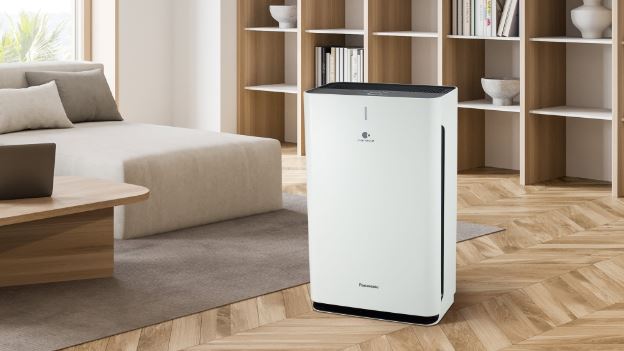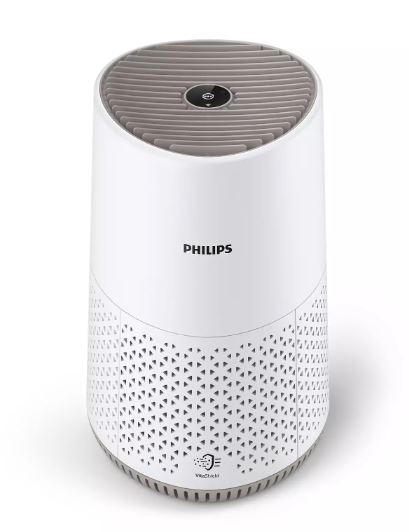Air Purifiers for Smoke Removal: Clearing the Air After Wildfires and More
Air Purifiers for Smoke Removal: Clearing the Air After Wildfires and More
Blog Article
In a health-conscious world, the air quality indoors and out has become a prominent focus for many people. With rising pollution levels and a better understanding of the influence of indoor air quality on overall health on our health, it's no surprise that the air purifier industry is experiencing tremendous growth.
Air purifiers are appliances that remove contaminants from the air in a given area, enhancing the air we breathe indoors. They are ideal for those with allergies, asthma, or respiratory concerns as they can significantly lower the amount of allergens, pollutants, and irritants in the air. Even healthy individuals can rely on the added protection of air purifiers, as they provide reassurance and safeguard against airborne diseases.
This comprehensive overview will delve into the intriguing world of air purification, discussing the perks they offer, the different types available, essential factors when making a purchasing decision, and how to get the most out of your device. By the end, you should have a comprehensive understanding of air purifiers and be able to choose wisely about whether investing in one is the best option for you and your loved ones.

Decoding Air Pollutants and Their Impact on Health
To grasp the importance of air purification, it's essential to grasp the variety of contaminants they address and the likely impact of exposure to these contaminants.
Indoor air pollutants can be broadly categorized into the following three categories:
- Airborne Particles: This includes solid particles and liquid droplets suspended in the air. Examples include pollen, smoke, dust, pet dander, and mold spores, to name a few. Particulate matter can lead to respiratory complications and trigger allergic reactions.
- Volatile Organic Compounds (VOCs): VOCs are gaseous compounds released from solids and liquids. Sources of VOCs include aerosol sprays, cleaning products, paints, and pesticides, among others. Exposure to VOCs can lead to eye, nose, and throat irritation, headaches, and nausea.
- Biological Contaminants: These include bacteria, viruses, mold, and mildew. They can cause a range of health issues, from minor allergies to serious infections.
The effects of these pollutants on human health can greatly vary. For individuals with respiratory conditions or compromised immune systems, exposure to indoor air pollutants can lead to significant health complications. For those in good health, prolonged exposure over time to certain pollutants can contribute to the development of respiratory issues and other health problems over time.

How Air Purifiers Work
Air purifiers use a combination of physical and chemical processes to capture and remove pollutants from the air. Understanding the basic mechanisms employed by purifiers will help you grasp how they work and the array of models on the market.
Here are the primary mechanisms and innovations used in air purifiers:
- Filtration Excellence: This is the most common method used in air purifiers. It involves using filters to trap particles as air is passed through the filtration system. The filtration media varies, each designed to capture specific types of particles. For example:
- Pre-filters: The First Line of Defense: These are usually the initial barrier, capturing larger particles like dust, hair, and similar larger particles.
- HEPA Filtration: Unparalleled Performance: HEPA filters are remarkably proficient at capturing microscopic particles, including pollen, dust mites, and some bacteria and viruses. To be labeled a bona fide HEPA filter, it must trap a minimum of 99.97% of particles down to 0.3 microns in size.
- charcoal filtration: These filters are designed to effectively remove odors, VOCs, and gaseous compounds.
- Ionizers: Charging Ahead: Ionizers use electrical charges to create ions with a negative charge, which bind to particles in the air. The charged particles are drawn to nearby surfaces or the purifier itself.
- Ozone's Double-Edged Sword: Some air purifiers use ozone, a powerful oxidant, to break down pollutants. While effective, excessive ozone exposure carries risks so these types of purifiers should be used with moderation and in well-ventilated areas.
- Ultraviolet (UV) Light: UV light can be used to neutralize bacteria, viruses, and mold spores. UV light is commonly paired with filtration to capture particles first, followed by UV light to neutralize any remaining biological threats.
Choosing the Right Air Purifier
With a plethora of options available, selecting the right air purifier can be a difficult decision. It's important to consider several factors to ensure you make the best decision for your unique requirements and space.
Here are some essential factors to weigh:
- Considering Room Size: Air purifiers are typically rated for specific room sizes, so it's important to choose a model that can effectively handle the square footage of the room. Most purifiers will list a maximum room size or a Clean Air Delivery Rate (CADR), which indicates the volume of filtered air delivered per minute.
- Understanding Contaminants: Identify the particular contaminants you want to target. If you suffer from allergies, look for a purifier with a HEPA filter. For reducing unwanted smells, consider a model with a carbon-based filter. If you're concerned about bacteria and viruses, a purifier with UV light disinfection might be best.
- Quiet Operation: Air purifiers can produce varying levels of noise, so if you plan to use it in a serene environment, look for models with a sleep mode or quiet setting.
- Maintaining Performance: Consider the long-term expenses and upkeep of the purifier. HEPA filters, for example, typically need to be replaced every 6-12 months, depending on use and environmental factors. Remember to budget for filter replacements when making your choice.
- Smart Innovations: Many purifiers offer intelligent features like air quality sensors, automatic modes, and Wi-Fi connectivity, allowing wireless control and real-time data. These features can enhance the convenience and effectiveness of your purifier.
Unlocking the Full Potential of Your Air Purifier
Once you've chosen and set up your air purifier, there are several things you can do to ensure it operates at optimal levels and delivers the greatest advantages:
- Strategic Positioning: Position your purifier in an open area, away from walls and furniture, to ensure efficient air circulation. Avoid placing it near open windows or doorways as drafts can impact its efficiency.
- Round-the-clock Operation: For the best results, it's recommended to run your purifier regularly. Many models have low-energy settings or automatic modes that adjust the fan speed based on air quality, so you can maintain fresh air without excessive energy costs.
- Filter Maintenance: Regularly adhere to the recommended filter replacement schedule. Over time, filters become saturated with particles, affecting efficiency. Mark the date of replacement on your calendar so you don't forget.
- Limiting Indoor Pollutants: Alongside using an air purifier, take steps to minimize indoor air pollutants. This could include frequent dusting and vacuuming, opting for natural cleaning solutions, and reducing chemical or aerosol usage. Report this page